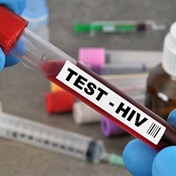
While the HIV infection rate among most age groups in South Africa is stabilising, teenage mortality from Aids has doubled with adolescent girls at a particularly high risk of developing Aids.
In a recent press release, non-profit organisation Right to Care explains:
“Nearly a third of all new HIV infections in South Africa occur in 15–24 year olds with adolescent girls being up to eight times more likely to be infected with HIV than their male counterparts. According to HSRC statistics, black African females aged 20–34 have a HIV prevalence rate of 31.6% and that almost a quarter of all new infections occur amongst young women aged 15 – 24.”
Even more concerning is that while mortality due to Aids is decreasing among all other age groups, the number of adolescents dying from HIV-associated conditions has doubled. In 2013, 120 000 adolescents died from Aids.
They add that, in rural South African areas, more than half of sexually active youth aged 15–24 did not use a condom with their most recent partner.
In 2012, the Human Sciences Research Council (HRSC) conducted the South African National HIV Prevalence, Incidence and Behaviour Survey. The research found that condom use had decreased, as had the level of education around HIV.
The report explains that the South African government has focused on medical solutions to the HIV epidemic, emphasising medical male circumcisions and ART programmes. “Social and behavioural interventions have, however, fallen largely by the wayside.”
Dr Marnie Vujovic, Paediatric and Adolescent Psychosocial Programme Manager of Right to Care, believes that a series of focused interventions are needed to address the issue:
“We need to focus on a well-targeted package of interventions that can address some of the most pressing challenges we face – worrying levels of sexual coercion, age disparate relations and violence, high rates of teen pregnancy. A coordinated response is needed which strengthens the support systems available to young women at various contact points such as family, school and healthcare facility, and which offers education around issues such as sexuality and HIV risk.”
A 2010 BMC Public Health research article suggests that addressing poverty, gender, alcohol use and other social risk factors is critical to reducing the prevalence of HIV amongst South African teens.
The paper further suggests that better school programmes are needed with a focus on interactive HIV education.
Read more:
What makes women vulnerable to HIV? Men, power and money, say youth




 Publications
Publications
 Partners
Partners















